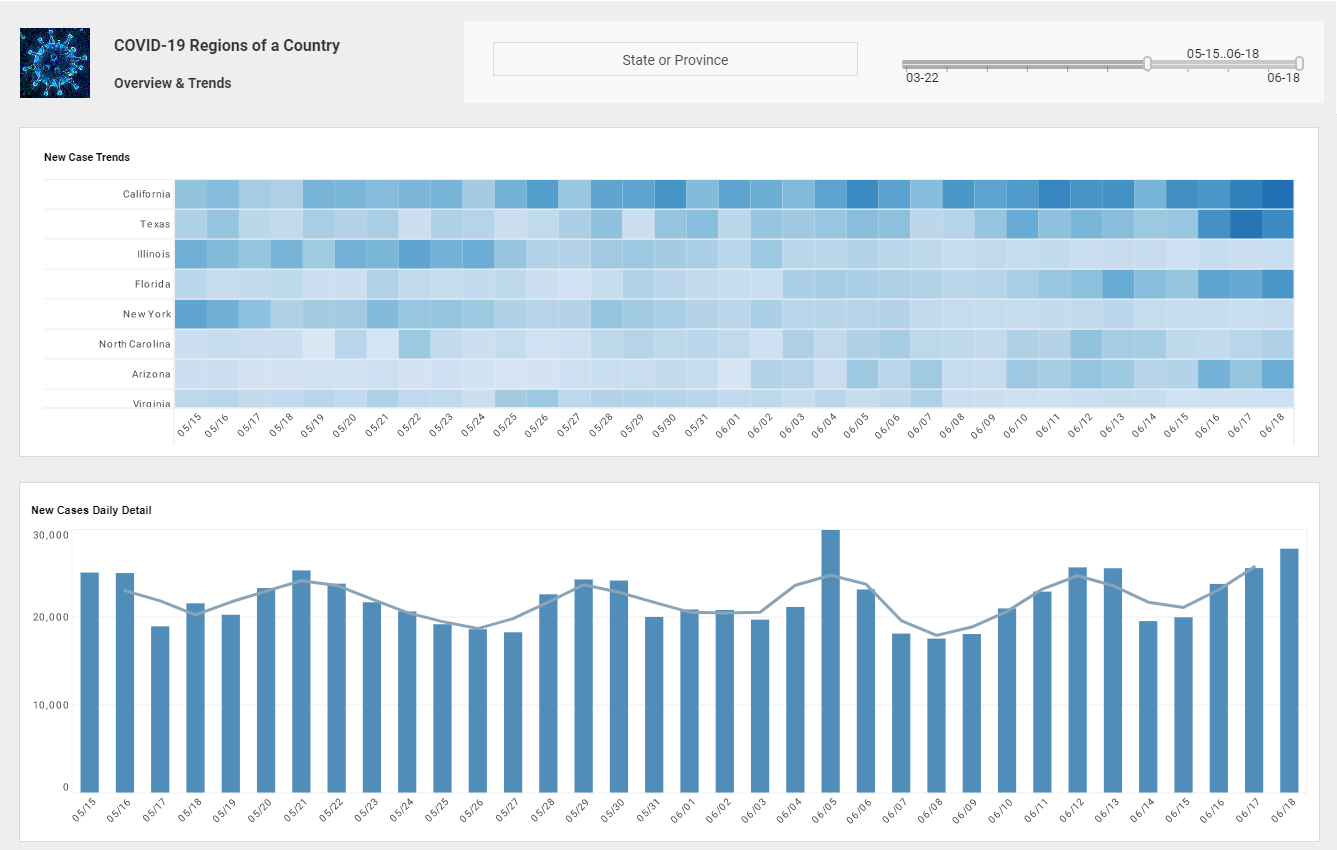What Are the 5 V's of Data Analytics?
The process of reviewing and analysing data in order to extract insights and make educated decisions is referred to as data analytics. It entails collecting, processing, and analysing data from multiple sources, including as databases, spreadsheets, and internet platforms, using a variety of methodologies and tools.
The 5 V's of Data analytics are:
- Velocity
- Volume
- Variety
- Value
- Veracity
| #1 Ranking: Read how InetSoft was rated #1 for user adoption in G2's user survey-based index | Read More |
Volume
Volume refers to the amount of data present in the database. The value of the data is determined by its size. When you have an enormous amount, it is considered big data. It is also relative to the computing power available. But generally, Data analytics is founded upon the presence of a large volume of data without which it is impossible to create advanced models for machine learning or AI. The tech world is progressing toward AI which requires processing, learning, and understanding huge volumes of data. Companies trying to beat their competitors must have such data to develop and use advanced analytics.
Velocity
The speed with which data is being accumulated and accessed refers to the Velocity. In this tech era, you can find huge amounts of data flowing in and out every day. This continuous flow of data must be quick so that it is available for businesses to use to their advantage at the right time. The market situation is highly competitive which demands creating timely strategies. This can only be possible with the help of big data.
There are several modes through which data is collected. For example, with the advent of smartphones and social media, companies are collecting a lot of information from users including their browsing behaviour. So, this high volume of data flowing in with high velocity is part of big data analytics.
This flow of information can be from various sources which must be analysed quickly so that it can be used in real-time applications. This generation, flow, and analysis of the data with a speed is an aspect of data analytics.
 |
Read how InetSoft saves money and resources with deployment flexibility. |
Variety
Data is not found in a single type. You can find varieties of data in different types coming from various sources. Usually, data comes from the organization as well as from external media. It is not a condition that all the acquired data is of the same format and size. So, standardizing and distributing the data will be a challenge for companies.
Data collected is of three types:
- Unstructured
- Semi-Structured
- Structured
Unstructured data refers to the unorganized data that comes into the company in different sizes and formats. This type of data is difficult to use for mainstream applications and cannot be used for analytical models.
As for the semi-structured data, it is also unorganized but has some form of metadata which makes it easier to process. It is better than unstructured data which is very difficult to sort. The semi-structured data can be organized into a specialized repository.
Structured data is organized into a formatted repository which is easier and more efficient for data processing and analysis. So, companies prefer structured data for training their models.
Veracity
This is another important part of the data which refers to the quality and accuracy. The data collected from a variety of sources may not be complete and accurate. Some of the areas can have missing pieces with certain inaccuracies. So, it will not be able to give proper insight and cannot obtain a result with the analytical models.
Veracity is an important factor because inaccurate and incomplete data can be a serious issue. Especially in organizations like health care, if any data becomes corrupted, inaccurate, or missing, it may become dangerous to the patient's life.
Therefore, the veracity of the data is a crucial pillar of data analytics. It defines the quality of the data and provides proper insights.Value
Data is useful according to the value it can provide. Organizations must benefit from the collected data and this can be more fruitful only when the gathered information has value. The more invaluable data you collect, the more efficiency reduces. The analytics model will also be used in vain and doesn't produce useful insights.
Both veracity and value go hand in hand. Veracity confirms the value of the data and without value, the data is not eligible for usage. You cannot get proper insights from such data. Also, data analytics will be used to get valuable results from the data and this is also a part of good quality information.
 |
Learn about the top 10 features of embedded business intelligence. |
Conclusion
Data scientists often look for these 5V's to get more value from the data. So, with big data analytics, companies can provide better services to their customers. Also, they can think ahead of their competitors. These Vs will help the companies to effectively articulate and communicate many characteristics of the big data.
Each organization can give importance to each of these Vs in a different manner. But the fundamentals of the Vs are common to all and it is important to take note of these to maintain the quality of data used. These are the importance of 5Vs in big data analytics.

